Wildflowers, Grasses and Other Nonwoody Plants
Media

Species Types
Scientific Name
Hypoxis hirsuta
Description
Yellow star grass grows throughout the tallgrass prairie region. Imagine the thoughts of pioneers when they gazed upon these bright little lilies during stops along their westward journey!
Media
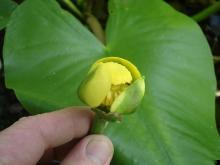
Species Types
Scientific Name
Nuphar advena (formerly N. lutea)
Description
Spatterdock is a native aquatic plant with deep yellow, saucer-or globe-shaped flowers to 3 inches across. It grows in ponds, lakes, and slow-moving to stagnant portions of streams, rivers, and spring branches.
Media

Species Types
Scientific Name
Potamogeton spp.
Description
Pondweeds are rooted aquatic plants with underwater leaves on long, flexible, jointed stems. Some have floating leaves, too, that are differently shaped. Missouri has about 10 species in the pondweed genus.
Media
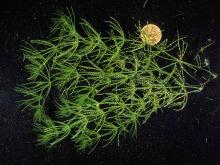
Species Types
Scientific Name
Chara spp.
Description
These aquatic algae look like regular vascular plants. Chara has a crisp, gritty texture, a musky odor, and gray-green, needlelike structures that resemble leaves.
Media

Species Types
Scientific Name
Najas spp.
Description
Naiads are slender, narrow-leaved plants that grow completely under water and are rooted to the bottom. They never have broad, floating leaves or conspicuous flowers or seed heads.
Media

Species Types
Scientific Name
Ceratophyllum demersum
Description
Coontail, a common submerged aquatic plant, got its name from the crowded upper leaves, which make the stem tip appear bushy like the tail of a raccoon.
Media
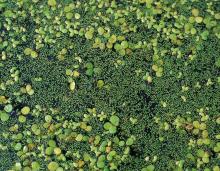
Species Types
Scientific Name
Lemna spp.; Spirodella spp.; Wolffia spp.
Description
Duckweeds are the smallest of the flowering plants. They consist of tiny, green, round, leaflike bodies that float on the water’s surface. They are an important food for waterfowl.
Media

Species Types
Scientific Name
Phytolacca americana
Description
A tall, smooth, branching plant with red stems and juicy, dark purple berries, pokeweed is both toxic and a traditional edible potherb called poke salat. It is common statewide.
Media
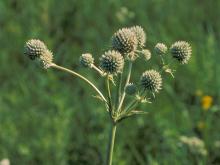
Species Types
Scientific Name
Eryngium yuccifolium
Description
“It’s an odd plant,” this rattlesnake master, “with its leaves like yucca, a head like a thistle, and second cousin to the carrot.” That’s how the great prairie writer John Madson summed it up!
Media
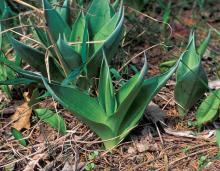
Species Types
Scientific Name
Manfreda virginica (formerly Agave virginica)
Description
False aloe is one of the few native Missouri plants related to the agaves, or century plants, of the Southwest. Unlike agaves, a false aloe rosette can bloom and rebloom, and it doesn’t die after sending up a flowering stalk.
See Also
About Wildflowers, Grasses and Other Nonwoody Plants in Missouri
A very simple way of thinking about the green world is to divide the vascular plants into two groups: woody and nonwoody (or herbaceous). But this is an artificial division; many plant families include some species that are woody and some that are not. The diversity of nonwoody vascular plants is staggering! Think of all the ferns, grasses, sedges, lilies, peas, sunflowers, nightshades, milkweeds, mustards, mints, and mallows — weeds and wildflowers — and many more!





















